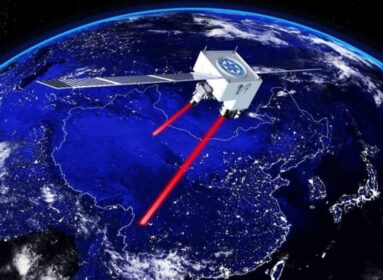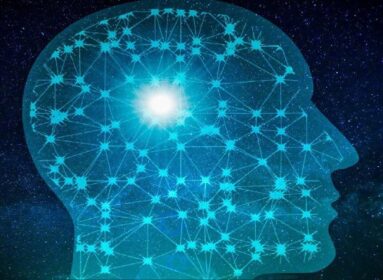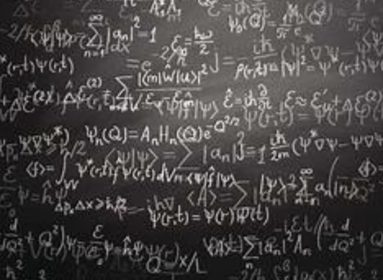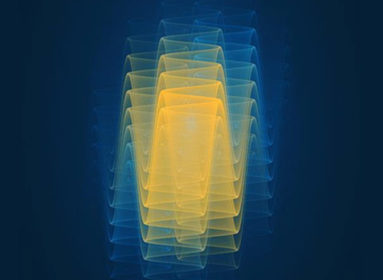
From science fiction to science fact, there is a concept that suggests
that there could be other universes besides our own.
understand how our universe is believed to have come to be. Around 13.7 billion years ago, simply speaking, everything we know of in the cosmos was an infinitesimal singularity. Then, according to the Big Bang theory, some unknown trigger caused it to expand and inflate in three-dimensional space. As the immense energy of this initial expansion cooled, light began to shine through. Eventually, the small particles began to form into the larger pieces of matter we know today, such as galaxies, stars and planets.
One big question with this theory is: are we the only universe out there? With our current technology, we are limited to observations within this universe because the universe is curved, and we are inside the fishbowl, unable to see the outside of it (if there is an outside.)
There are at least five theories why a multi universe is possible, as a 2012 Space.com article
explained:
- Infinite universes. We don’t know what the shape of space-time is exactly. One prominent theory is that it is flat and goes on forever. This would present the possibility of many universes being out there. But with that topic in mind, it’s possible that universes can start repeating themselves. That’s because particles can only be put together in so many ways. More about that in a moment.
- Bubble universes. Another theory for multiple universes comes from “eternal inflation.” Based on research from Tufts University cosmologist Alexander Vilenkin, when looking at space-time, some
areas of space stop inflating like the Big Bang inflated our own universe. Others, however, will keep getting larger. So, if we picture our own universe as a bubble, it is sitting in a network of bubble
universes of space. What’s interesting about this theory is the other universes could have very different laws of physics than our own, since they are not linked. - Daughter universes. Or perhaps multiple universes can follow the theory of quantum mechanics (how subatomic particles behave), as part of the “daughter universe” theory. If you follow the laws of
probability, it suggests that for every outcome that could come from one of your decisions, there would be a range of universes — each of which saw one outcome come to be. So, in one universe, you took that job to China. In another, perhaps you were on your way and your plane landed somewhere different, and you decided to stay. And so on. - Mathematical universes. Another possible avenue is exploring mathematical universes, which, simply put, explain that the structure of mathematics may change depending in which universe you
reside. “A mathematical structure is something that you can describe in a way that’s completely independent of human baggage,” said theory-proposer Max Tegmark of the Massachusetts Institute of
Technology, as quoted in the 2012 article. “I really believe that there is this universe out there that can exist independently of me that would continue to exist even if there were no humans.” - Parallel universes. And finally, as the idea of parallel universes. Going back to the idea that space time is flat, the number of possible particle configurations in multiple universes would be limited to 10^10^122 distinct possibilities, to be exact. So, with an infinite number of cosmic patches, the particle arrangements within them must repeat — infinitely many times over. This means there are infinitely many “parallel universes”: cosmic patches the same as ours (containing someone exactly like you), as well as patches that differ by just one particle’s position, patches that differ by two particles’ positions, and so on down to patches that are totally different from ours.

Famously, physicist’s Stephen Hawking’s last paper before his death also dealt with the multi universe. The paper was published in May 2018, just a few months after Hawking’s demise. About the theory, he told Cambridge University in an interview published in The Washington Post, “We are not down to a single, unique universe, but our findings imply a significant reduction of the multiverse
to a much smaller range of possible universes.”
Arguing against a parallel universe Not everyone agrees with the parallel universe theory, however. A 2015 article on Medium by astrophysicist Ethan Siegal agreed that space-time could go on forever in theory but said that there are some limitations with that idea. The key problem is the universe is just under 14 billion years old. So, our universe’s age itself is obviously not infinite, but a finite amount. This would (simply put) limit the number of possibilities for particles to rearrange themselves, and sadly make it less possible that your alternate self-did get on that plane after all to see China.
Also, the expansion at the beginning of the universe took place exponentially because there was so much “energy inherent to space itself,” he said. But over time, that inflation obviously slowed — those particles of matter created at the Big Bang are not continuing to expand, he pointed out. Among his conclusions: that means that multiverses would have different rates of inflation and different times (longer or shorter) for inflation. This decreases the possibilities of universes like our own.
“Even setting aside issues that there may be an infinite number of possible values for fundamental constants, particles and interactions, and even setting aside interpretation issues such as whether the many-worlds-interpretation actually describes our physical reality,” Siegal said, “the fact of the matter is that the number of possible outcomes rises so quickly — so
much faster than merely exponentially — that unless inflation has been occurring for a truly infinite amount of time, there are no parallel universes identical to this one.”
person that can make those choices happen.


































































Comments are closed.